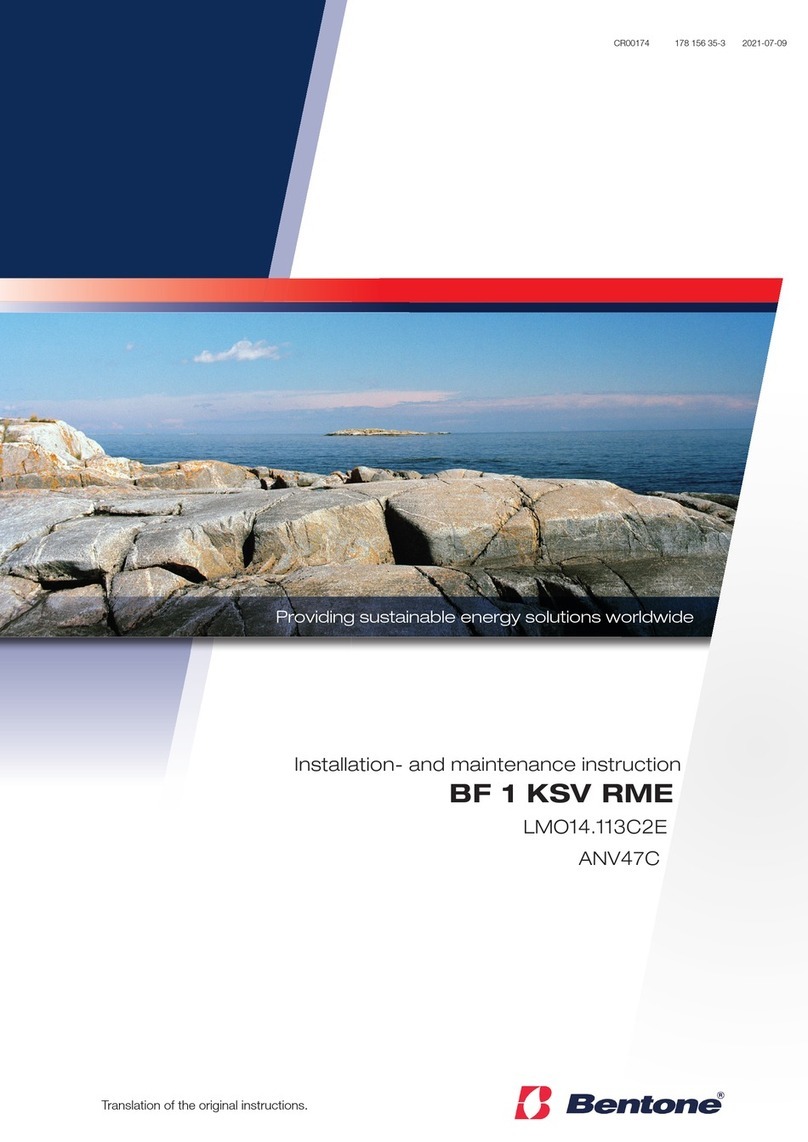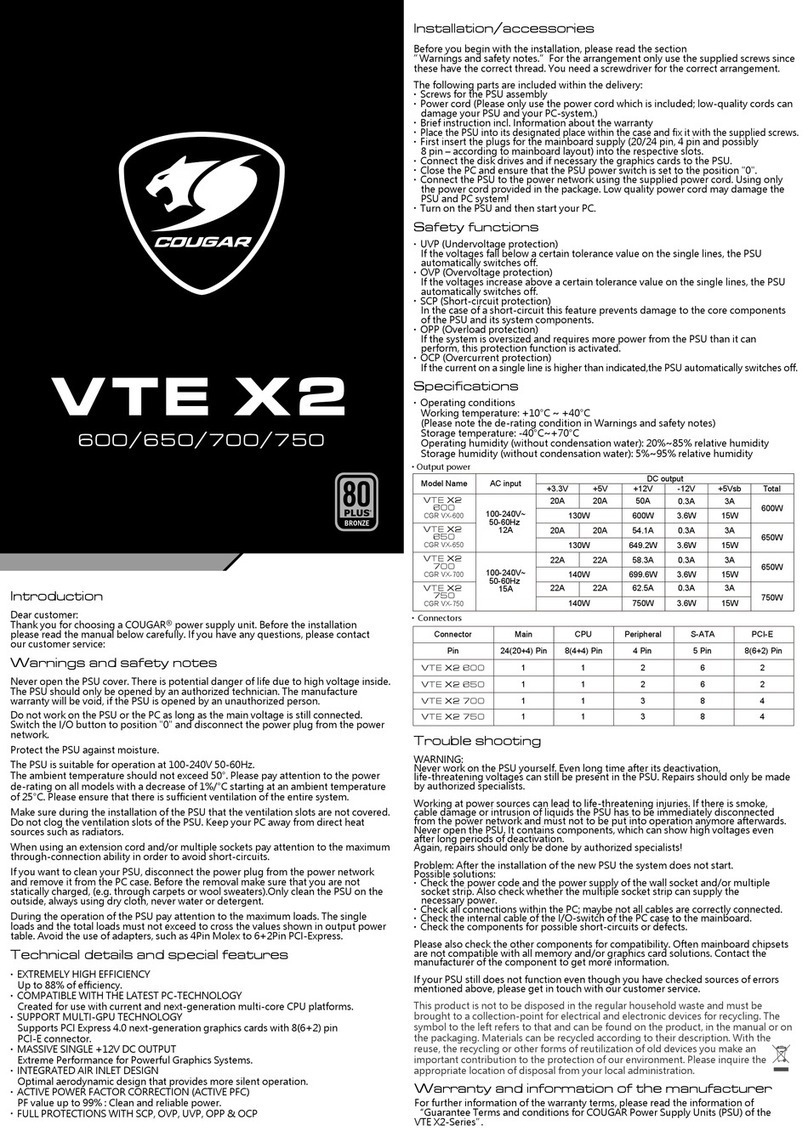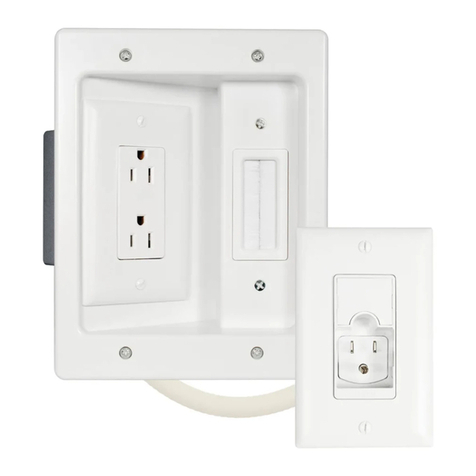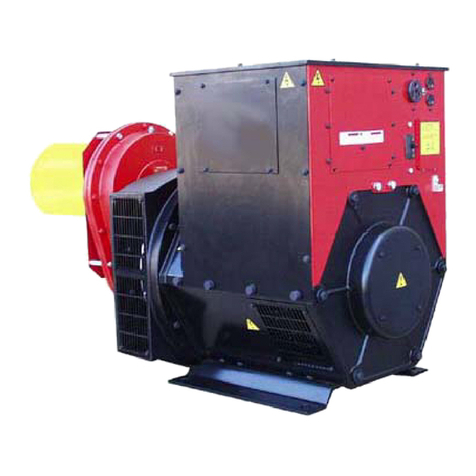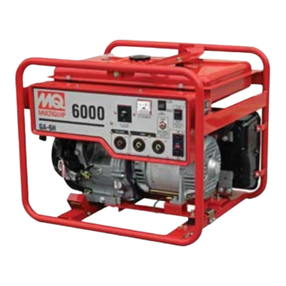Bentone BG 450 Technical specifications

Providing sustainable energy solutions worldwide
178 125 76-1 2018-04-04
Installation- and maintenance instruction
BG 450
J/K


3Bentone
General
Table of contents
1. Technical data _____________________________________________________________10
1.1 Burners are intended for use at:_______________________________10
1.2 Dimensions ___________________________________________________________10
1.2.1 Dimension of flange _____________________________________11
1.2.2 Capacity range____________________________________________ 12
1.2.3 Appliance categories ___________________________________13
1.2.4 Electric Specification____________________________________15
1.2.5 Working field_______________________________________________16
1.3 Description BG 550/650 _________________________________________ 18
1.3.1 Components BG 550/650____________________________ 19
1.4 Description BG 700/800/950___________________________________20
1.4.1 Components BG 700/800/950 _____________________21
2. General instruktions ____________________________________________________ 22
2.1 General instructions________________________________________________22
2.2 Operating instructions_____________________________________________ 22
2.3 Instructions____________________________________________________________22
2.4 Inspection and maintenance____________________________________22
2.5 Start up_________________________________________________________________ 22
2.6 Commissioning of installation___________________________________22
3. Installation __________________________________________________________________23
3.1 Delivery check _______________________________________________________23
3.2 Preparations for installation _____________________________________23
3.3 Gas supply ____________________________________________________________ 23
3.4 Electric connection_________________________________________________23
3.5 Skeleton diagrams _________________________________________________24
3.6 Fitting the burner to the boiler__________________________________25
3.7 Handling and lifting instruktion _________________________________ 26
3.7.1 BG 550, BG 650 _________________________________________26
3.7.2 BG 700, BG 800, BG 950 ____________________________26
3.8 Inspection of gas nozzle before commissioning _________27
4. Setting the burner _______________________________________________________ 28
4.1 Setting the combustion assembly ____________________________28
4.1.1 Setting the combustion assembly,
BG 550 & 650 __________________________________________________28
4.1.2 Setting the combustion assembly, BG 700, 800
& 950 ______________________________________________________________ 28
4.2 Setting the air damper ____________________________________________ 28
4.2.1 Calculate prepurge time: ______________________________29
4.3 Setting the gas damper __________________________________________29
4.4 Recommended excess air when using default setting 30
4.5 Determining the gas quantity for the system______________30
4.5.1 Example of how to calculate the gas quantity
(natural gas G20): _____________________________________________ 31
4.6 Calculating the quantity of gas supplied____________________32
5. Service________________________________________________________________________33
5.1 Servicing the combustion assembly _________________________33
5.2 Servicing air dampers _____________________________________________34
5.3 Replacement of damper motor, air ___________________________35
5.4 Replacement of damper motor, gas _________________________37
5.5 Flame monitoring and ionisation current check__________38
5.6 Gas nozzle BG 550/650__________________________________________40
5.7 Gas nozzle BG 550LN ____________________________________________40
5.8 Gas nozzle BG 700/800__________________________________________41
5.9 Gas nozzle BG 950 ________________________________________________42
5.10 UV detector ___________________________________________________________43
5.11 Setting the air pressure switch_________________________________44
5.12 Setting the min. gas pressure switch ________________________45
5.13 Setting the overload protection gas pressure switch___46
5.14 Setting the max. gas pressure switch _______________________47
5.15 Vibration________________________________________________________________ 48
6. Handing over of the installation ___________________________________ 49
7. Fault location, functional troubles________________________________49
8. Regulators __________________________________________________________________ 50
9. Damper motors ___________________________________________________________ 51
9.1 SQN damper motor________________________________________________ 51
9.1.1 Technical specification _________________________________51
9.1.2 Mounting position________________________________________52
9.1.3 Choice of damper motor variant____________________ 52
9.1.4 Important to remember ________________________________52
9.2 SQM damper motor _______________________________________________ 53
9.2.1 Technical specification _________________________________53
9.2.2 Mounting position________________________________________54
9.2.3 Choice of damper motor variant____________________ 54
9.2.4 Important to remember ________________________________54
10. Gas train__________________________________________________________________ 55
10.1 DMK gas butterfly damper ______________________________________55
10.1.1 Technical specification _________________________________55
10.1.2 Installation position ______________________________________ 56
10.1.3 Important to remember ________________________________56
10.2 MULTI-BLOCK VGD40… SKP15/25 ________________________ 57
10.2.1 Technical specification _________________________________57
10.2.2 Overview ____________________________________________________58
10.2.3 Installation position ______________________________________ 59
10.2.4 Adjusting the multi-block______________________________ 59
10.2.5 Actuator SKP15 __________________________________________ 59
10.2.6 Actuator SKP25 __________________________________________ 59
10.3 MULTI-BLOCK, MB-DLE 412-420 ___________________________61
10.3.1 Technical specification _________________________________61
10.3.2 Overview ____________________________________________________62
10.3.3 Pressure taps______________________________________________ 63
10.3.4 Electrical connection____________________________________ 63
10.3.5 Installation position ______________________________________ 64
10.3.6 Adjusting the multi-block______________________________ 64
11. Electric equipment___________________________________________________ 66
11.1 Safety system _______________________________________________________66
11.2 Wiring diagram ______________________________________________________ 67
11.3 Wiring diagram RWF 50:3 _______________________________________68
11.4 Wiring diagram RWF 50:2 _______________________________________69
11.5 Wiring diagram Jumo 316 _______________________________________70
11.7 List of components_________________________________________________71
11.6 Components, electrical cabinet________________________________ 71
12. LMV37 automatic control unit __________________________________ 72
12.1 System structure/function description_______________________72
12.2 General information ________________________________________________ 73
12.3 Technical Data Basic unit LMV37.4...________________________73
12.4 Connection and internal diagram _____________________________78

4Bentone
13. Operation _______________________________________________________________80
13.1 LMV37 automatic control unit__________________________________ 80
13.1.1 Explanation of display and buttons________________ 80
13.2 List of phase displays _____________________________________________82
13.3 Automatic control unit levels____________________________________83
13.3.1 Structure of parameter levels ________________________84
13.3.2 Parameter of level info__________________________________85
13.3.3 Parameter of level service_____________________________85
13.3.4 Access code for service engineer level___________ 86
13.4 Setting the automatic control unit_____________________________ 88
13.4.1 Setting an automatic control unit which has not
previously been set or lost its settings _________________88
13.4.2 The parameters below may need to be set ac-
cording to the nature of the installation._______________ 99
13.4.3 Adjusting settings of previously set automatic
control unit_____________________________________________________ 102
13.5 Backup and restore______________________________________________ 107
13.5.1 Backup ____________________________________________________ 107
13.5.2 Restore ____________________________________________________ 109
13.6 Fault status message, display of errors and info_______ 111
13.6.1 Display of errors (faults) with lockout____________ 111
13.6.2 Activating info / service mode from lockout __ 112
13.6.3 Error with safety shutdown _________________________ 113
13.6.4 Error history ______________________________________________ 114
13.7 Dispaly message of info ________________________________________ 117
13.7.1 General information ___________________________________ 117
13.7.2 Start prevention_________________________________________ 117
13.7.3 Safety loop _______________________________________________ 117
13.8 Resetting the automatic control unit _______________________ 118
13.9 Manual output _____________________________________________________ 119
13.9.1 Activation of Manually OFF in standby via the
display and operating unit________________________________ 119
13.9.2 Activation of Manually OFF in operation and ad-
justment of output via the display and operating unit
120
14. Parameter list ________________________________________________________ 121
15. Error code list________________________________________________________ 130
16. Declaration of conformity ______________________________________ 144
17. General instruction for gasburner___________________________ 146

5Bentone
4Bentone
1. General Information
This Installation and Maintenance manual:
• is to be regarded as part of the burner and must always be kept near
the installation site
• is intended for use by authorised personnel
• must be read prior to installation
• must be observed by all who work with the burner and associated
system components
• work with the burner may only be carried out by certified installers/
personnel
Enertech AB is not liable for any typographical errors and reserves the right
to make design changes without prior notice.
Safety instructions
• The burner may only be used for its intended purpose in accordance
with the product’s technical data.
• The burner may only be installed and operated by authorised
personnel.
• The product is packaged to prevent damage from occurring during
handling. Handle the product with care. Lifting equipment must be
used to lift larger packages.
• The products must be transported/stored on a level surface in a dry
environment, max. 80% relative humidity, no condensation.
Temperature -20 to +60 °C.
• Check that the burner is compatible with the boiler’s output range.
• All components must be installed without being bent, twisted or
subjected to mechanical or thermal forces which can affect the
components.
• The burner must be installed so that it complies with local regulations
for fire safety, electrical safety, and fuel distribution.
• The gas outlet from the pressure regulator shall be configured in
accordance with applicable regulations and lead to a safe area.
• Make sure when installing the equipment that there is enough space to
service the burner.
• Permitted temperature during operation -10 to +60 °C. Max 80%
relative humidity, no condensation.
• The installer must ensure that the room has adequate air supply.
• The room must comply with local regulations pertaining to its intended
use.
• The installation site must be free of chemicals.
• Burner pipes, fan wheels and air dampers may contain sharp edges.
• The surface temperature of the burner’s components can exceed 60
°C.
• Caution: The burner has moving parts, and there is risk of crushing
injuries.
172 515 01 2018-01-02
1. General Information

6Bentone
5Bentone
• The electrical installation must be professionally carried out in
accordance with applicable high voltage regulations, as per Enertech’s
recommendations.
• Before servicing, shut off the fuel supply and turn off the power to the
burner.
• Seal inspections must be performed during installation and servicing to
prevent gas leakage.
• Care should be taken by the installer to ensure that no electrical cables
or fuel lines are crushed or otherwise damaged during installation or
servicing.
• If the boiler is equipped with an access hatch, this must be equipped
with a hatch opening switch connected to the burner's safety system.
• When in operation, the burner’s noise level can exceed 85 dBA.
Use hearing protection.
• The burner must not be put into operation without proper safety and
protection devices.
• A Class BE fire extinguisher is recommended.
• It is forbidden to alter thedesign or use accessories which have not
been approved by Enertech in writing.
• Prior to operation, the following points must be checked:
-fitting and installation work has been completed and approved
-electrical installation has been correctly performed
-flue gas ducts and combustion air ducts are not blocked
-all actuators and control and safety devices are in working order and
correctly set
Actions to take if you smell gas
Turn off the equipment and the boiler. Open windows and doors. Prevent
open flames or sparking, e.g. do not turn lights on or off, do not use any
electrical appliances, do not use mobile phones. Open windows and doors.
Close the gas ball valve. Warn residents; do not use doorbells. Evacuate
the building. Notify the installer or gas supplier once the building has been
evacuated.

7Bentone
6Bentone
Control system 10 years 250,000 starts
Valve control system 10 years 250,000 starts
Pressure switch 10 years 250,000 starts
Ignition system with flame guard 10 years 250,000 starts
UV flame sensor 10000 hrs N/A
Gas pressure regulators 15 years N/A
Gas valve without seal testing 10 years 250,000 starts
Gas valve with seal testing Replacement upon fault detection N/A
Gas pressure switch 10 years 250,000 starts
Safety blow-off system 10 years N/A
Damper motor N/A 500,000 starts
Contactor 10 years 500,000 starts
Burner 1 year 3000 hrs
Inspection of electrical installation 1 year 3000 hrs
Leakage check 1 year 3000 hrs
Filter 1 year replacement at ∆p>10 mbar 3000 hrs replacement at ∆p>10
mbar
Electrodes Replacement/Cleaning 1 year Replacement/Cleaning 3000 hrs
Brake disc Replacement/Cleaning 1 year Replacement/Cleaning 3000 hrs
Motor 1 year 3000 hrs
Fan wheel 1 Year
Replacement when cleaning
needed/ imbalance
3000 h
Replacement when cleaning
needed/ imbalance
The burner and its components must be recycled according to applicable regulations.
Burner servicing schedule
Servicing must be carried out once a year or after 3000 hours of operation
Component replacement intervals
Delivery check
• Make sure everything is delivered and the goods have not been
damaged during transit.
• If something is wrong with a delivery, report it to the supplier.
• Transport damage must be reported to the shipping company.

8Bentone
I
H
E
**J
AD
E
F
G
B
C
2. Technical data
2.1 Burners are intended for use at:
• Water heating generators
• Steam generators
• Industrial applications
• Hot air generators
2.2 Dimensions
D E F G H I **J
BG 450 538 252 328 *500 *640 262 200
K
L
M
* The above dimensions are max. measurements. Depending on the
components used, the measurements may vary.
** Min. recommended distance to floor.
K L M
BG 450 M12 (Ø 210) Ø 255-290 Ø 170
2.2.1 Heat generator connection dimensions
Dimensions stated in mm
Type Length of burner
tube
Flange
measure A
Burner tube
measure B
Burner tube
measure C
BG 450
1 256 226 ø160 ø162
2 356 326 ø160 ø162
3 456 426 ø160 ø162

9Bentone
2.2.2 Capacity range
Capacity kW Gas quantity
at min. power
Nm3/h 1)
Gas quantity
at max. power
Nm3/h 1)
Max. connection
pressure mbar
Min connection
pressure mbar
see data plate
Lower heat value Hu at normal state 15°C and 1013.25 mbar EN676
Grade of gas
Natural gas
Natural gas
Propane
Butane
Gas quantity and capacity vary according to grade of gas and connection
pressure.
BG450
G20 120-550 12 55 360
G25 120-550 15 69 360
G30 120-550 5 21 360
G31 120-550 4 16 360
kWh/Nm3MJ/Nm3kcal/Nm3
G20 9.5 34.02 8126
G25 8.2 29.25 6986
G30 32.5 116.09 27728
G31 24.6 88.00 21019
2.2.3 Appliance categories
Only dry gas is permitted for use
Gerätekategorien
Appliance categories
Versorgungsdrücke
Supply pressures
Besimmungsländer
Countries of desinaion
II
2R/3R
20-360mBar
BG, CZ, DE, EE, ES, FR, GR, HU, IS,
IT, LU, LV, NO, PT, SI,
All countries
II
2H3B/P
20-360mBar AT, CH, CY, DK, FI, LT, RO, SE,
SK
II
2H3P
20-360mBar GB, IE,
II
2L3B/P
20-360mBar NL, RO
II
2E3B/P
20-360mBar PL
I
2E(R)B
20-360mBar BE
I
3P
20-360mBar BE

10 Bentone
Burner correspond to IP20
Type BG 450
Motor 450W 230V 3,3A 50Hz
The recommended main fuse
motor C10A
Fitting Naturgas, Propan, Butan
1 ½”-2”
Control power 230V 3,3A 50Hz
Sound 89 dBA ± 0,5 dBA
2.2.4 Working field
BG 450
120-550 kW
-1
0
1
2
3
4
5
6
7
8
9
100 150 200 250 300 350 400 450 500 550 600
Mbar
kW
2.2.5 Electric Specification
!Do not exceed working
field
Measurements according to EN 3746: 2010
Alt.1 The sound level of the burner can be reduced by equipping the burner
with silencer. Installation must be done so it does not prevent air supply
to the burner.
Alt.2 The burner’s noise level can be reduced by connecting the burner’s air
intake to the air duct that opens into an appropriate location. Installation
must be done so it does not prevent air supply to the burner.

11Bentone
1
2
4
6
11
24
10
3
5
15
14
2
21
23
20
19
18
17
12,13
10
9
8
7
16
Components
1. Burner tube
2. Nozzle assembly
3. Connection flange
4. Electrical panel
5. Max. gas pressure switch
6. Fan housing
7. Brake plate
8. Ignition electrode
9. Ionisation electrode
10. Motor
11. Gas connection
12. Air intake
13. Air damper
14. Air pressure switch
15. Impulse pipe
16. Gas pressure switch
17. Changeover switch, increase-
decrease
18. Changeover switch, manual-
automatic
19. Indicator lamp, operation
20. Switch 0-1
21. Damper motor
22. Relay box
23. Electrical connection
24. MultiBloc
2.3 Description BG 450

12 Bentone
2.4 Gas nozzle
45°
Towngas
Natural gas Propan
Biogas (UV detector)

13Bentone
3. General instruktions
3.1 General instructions
The installation of the gas burner must be carried out in accordance with
current regulations and standards. The installers of gas burners should
therefore be acquainted with all regulations and ensure that the installation
complies with the requirements. The installation, mounting and adjustment
should be made with the greatest care and only the correct gas should be
used.
3.2 Operating instructions
The operating instructions accompanying the burner should be left in a
prominent position in the boiler room.
3.3 Instructions
The user should be thoroughly in-structed in the function of the gas burner
and the whole installation. The supplier must instruct the user.
3.4 Inspection and maintenance
See service schedule.
3.5 Start up
After the burner has been fitted to the boiler and the electric connection, the
leakage control, the venting and the electric function test have been carried
out, the burner will be ready for start-up.
Howerer, study the sections dealing with adjustments of multi-bloc,
combustion air and combustion head. Open the ball valve and switch on the
main switch. If the burner starts the actual adjustment can be made.
3.6 Commissioning of installation
Control of the combustion. The combustion quality is checked by means of a
flue gas analysis device. Adjust the burner to appr. 20%
excess air in accordance with the table. Check the flue gas temperature.
Calculate the efficiency. Check also the actual gas volume on the gas meter
so that the correct input is achieved.

14 Bentone
4. Installation
4.1 Delivery check
Check that all has been delivered and that the goods have not been
damaged during transport. If that is not the case, please notify the delivery
company. Transport damages should be reported to the forwarding agency.
4.2 Preparations for installation
Check that the measurements and capacity range of the burner are
compatible with the boiler. The power ratings on the type plate refer to the
min. and max. power of the burner.
4.3 Gas supply
For good operating safety, it is important that the gas supply system is
installed correctly.
Consider the following:
1. Check that the burner is approved for the gas quality of the installation.
If not, please contact the supplier.
2. Check that the gas components of the burner are approved for
indicated gas pressure.
3. The gas supply system should be installed in accordance with current
standards.
4. Pipe lines should be run so that service on boiler and burner is
facilitated.
5. Pipe lines should be run so that eventual contaminants cannot come
into contact with the gas components.
6. Gas discharge system must be installed prior to local regulations.
4.4 Electric connection
Before starting the electric installation, the main switch must be turned off.
If the boiler has a 7-pole and a 4-pole Eurostecker connector, these usually
fit directly to the burner. If not, use the connectors included.
(Refer to connection under Electric equipment)
!If an electric connection other than the one recommended by Enertech is used, a risk of damage and
injury can arise.

15Bentone
5b
4.5 Skeleton diagrams
1. Ball valve
2. Filter
3. Governor
4. Pressure gauge with shut-off cock
5a. Gas pressure switch, mini
5b. Gas pressure switch, maxi (option)
6a. Main valve, 2 -stage
6b. Safety valve
7. 1) Valve proving system
8. Air damper motor
9. Air pressure switch
10. Gas burner control LMV
11. Vent line to discharge gas
Pos. 5b, 7: Components not required according to EN 676.
1) Required over 1200 kW according to EN 676

16 Bentone
4.6 Handling and lifting instruction
4.6.1 BG 450
Figure 1
!Option
The lifting aid we used
here are available as
spare parts, Figure 1

17Bentone
4.7 Fitting the burner to the boiler
Mount the burner to the boiler using 4 bolts. See technical data for the hole
pattern.
To make the fitting process easier, it is possible to separate the burner body
from the gas flange with the combustion head and valve assembly in place.
Proceed as follows:
1. Ensure that no power is going to the burner. Break the main current
and disconnect the Euro plugs from the burner. NB: If the burner is
directly connected, ensure that all components on the burner are
without power.
2. Remove the cover plate from the fan housing.
3. Loosen screw D on the nozzle assembly.
4. Disconnect the electrical cables to the valve assembly and gas damper
motor.
5. Undo the screws (B) on both sides.
6. Undo the end stops (C) on the guides.
7. Disconnect the ignition cable, ionisation cable, and control arm from
the gas nozzle.
8. Pull out the burner body from the guides and put it in a suitable place.
After separating the burner body and the gas flange, it is easier to mount
the gas flange with the burner head and valve assembly to the boiler (loosen
the valve assembly if required). Once the gas flange is fitted to the boiler, it
is easy to lift the burner body up onto the guides. Assemble the burner in
reverse order to its disassembly.
Service position
!Check the gas tightness.

18 Bentone
4.8 Inspection of gas nozzle before
commissioning
The gas nozzle can easily be inspected by using the guides on the burner.
Proceed as follows:
1. Ensure that no power is going to the burner. Switch off the main power
supply and disconnect the Euro plugs from the burner.
2. Remove the cover plate from the fan housing.
3. Undo the nut (D) to the nozzle assembly.
4. Disconnect the ignition cable and ionisation cable for the gas nozzle.
5. Ensure there is enough slack in the electrical cables to the valve
assembly and gas damper motor to pull out the burner body in the rear
position on the guides. If there is not enough slack the cables can be
disconnected.
6. Undo the screw (B) on both sides.
7. Pull out the burner on the guides.
8. Undo the screw(s) (A) on the gas flange.
9. Take out the gas nozzle.
10. See section Gas nozzle
Re-assemble the burner in reverse order to that described above. When re-
assembling, make sure that the O-ring located between the gas nozzle and
the gas flange is in the correct position when the nozzle is re-fitted.
!If the burner is directly connected, ensure that all components on
the burner are without power.

19Bentone
X
5. Setting the burner
5.1 Setting the combustion assembly
It may sometimes be necessary to adjust the combustion assembly, i.e. the
position of the brake plate in the burner tube.
5.1.1 Setting the combustion assembly,
5.1.2 The burner is equipped with a lever that changes the
position of the brake plate in the combustion head.
This is used to set the correct pressure drop across
the combustion assembly and thereby obtain good
combustion without ripples.
Make the adjustment by turning screw X.
The best position is, among other things, dependent on
the input power and overpressure in the boiler.
A general rule of thumb is that the smaller the capacity, the smaller
the gap should be between the brake plate and the combustion
assembly.
The position of the brake plate also has an impact on the quantity
of air supplied for combustion. This means that once the brake
plate has been adjusted, the combustion should be checked and,
if necessary, the setting of the air damper adjusted to obtain good
combustion.
A left turn opens the brake plate, providing a lower pressure drop
and more air to the combustion process.
A right turn closes the brake plate, providing a higher pressure drop
and less air to the combustion process.

20 Bentone
5.2 Adjustment of gas flow (air
damper)
5.2.1 Damper motor, air volume
-Adjust the orange cam for min. load (about 5-10 on scale).
-Adjust the red cam for max. load (90°).
-The blue cam is factory set for closed position during standstill.
-The black cam has no function at modulating operation.
!Blå nock är gränsläge för helt stängt
spjäll och behöver normalt ej ändras.
Releasing button N.B.
The upper position is the
standard position
Max. load (red)
Min. load (orange)
Closed damper (blue)
5.3 Adjustment of gas flow
-Before the burner starts vent the lines to make sure that there is gas
available at the multibloc
-Use an allen key size 2,5 mm for adjusting N and V.
-Connect a pressure gauge for measuring PBr, (advisable to find out if
the valves are open)
-Set the switch in position MAN.
-Set the gas pressure switch min. and air pressure switch on min.
adjustment. Set the gas pressure switch max, if any, on max. adjust-
ment.
-Start the burner, observe the pressure gauge, if no flame is esta-
blished and the pressure gauge needle does not flicker, increase N.
When the flame is established adjust the gas flow by means of the
screw N. Use a flue gas instrument.
-Change over to max. load, press the switch “increase”
-Adjust the gas flow with V and check at the same time the combusti-
on values.
-Go back to min. load and check the combustion value. Adjust if
necessary.
-If necessary repeat the controls of the adjustment made on min. (N)
and max. load(V).
-The desired gas flow on min. and max. has now been adjusted by
changing the orange and the red cams. Check the gas flow on the
gas meter available on the installation.
-Note! Do not forget to set the air and gas pressure switches after the
adjustment, see special instructions
Releasing button:
By pressing the button and snapping it down, the motor will be released and
the damper can easily be turned. This function facilitates an exchange of
damper motor.
Other manuals for BG 450
1
Table of contents
Other Bentone Portable Generator manuals
Popular Portable Generator manuals by other brands

Keithley
Keithley 228A Application & Reference Guide
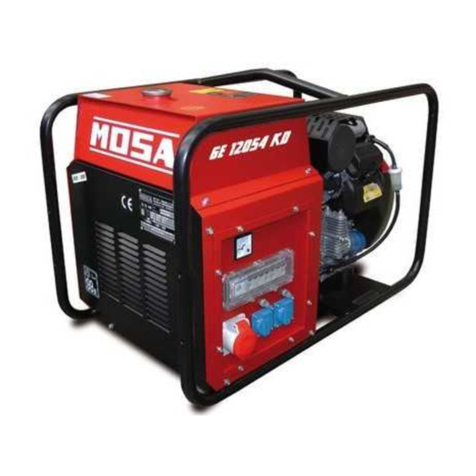
Mosa
Mosa GE 12054 KD Use and maintenance manual

Briggs & Stratton
Briggs & Stratton 30242 Operator's manual
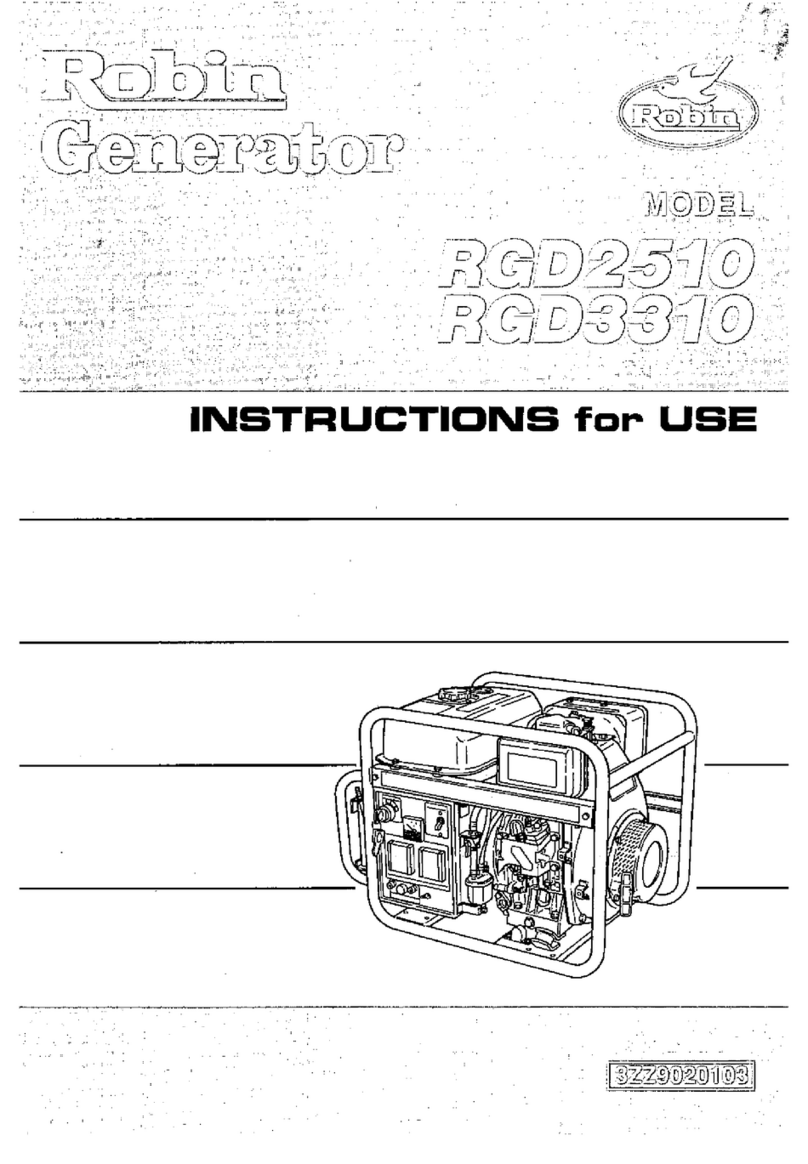
Robin America
Robin America RGB2510 Instructions for use
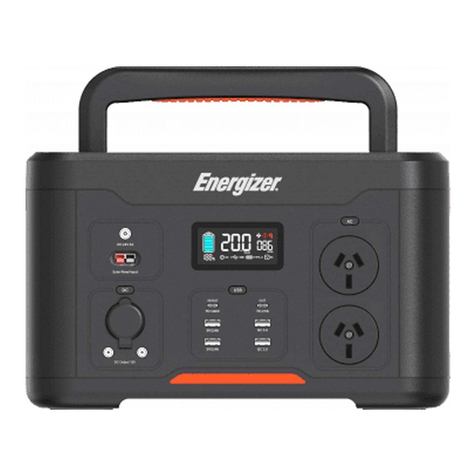
Energizer
Energizer Everest 1100 user guide

Generac Power Systems
Generac Power Systems A-6451 owner's manual
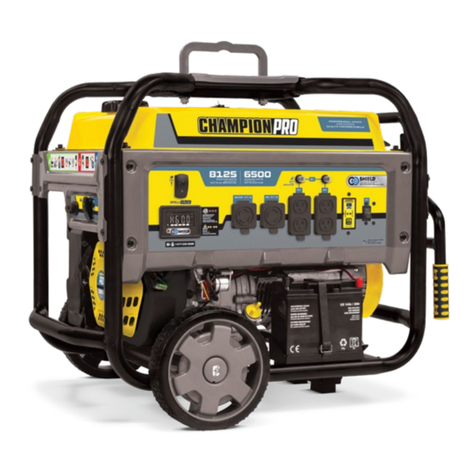
Champion Power Equipment
Champion Power Equipment Champion Pro 100430 quick start
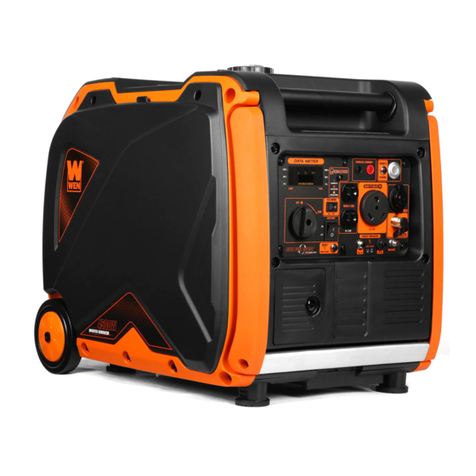
Wen
Wen DF452iX instruction manual
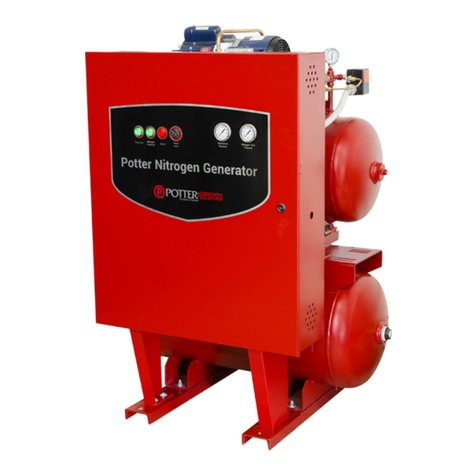
Potter
Potter NGP-1000D-M1 Installation, operation & service manual

Mobiltech
Mobiltech ZEUS150 user manual
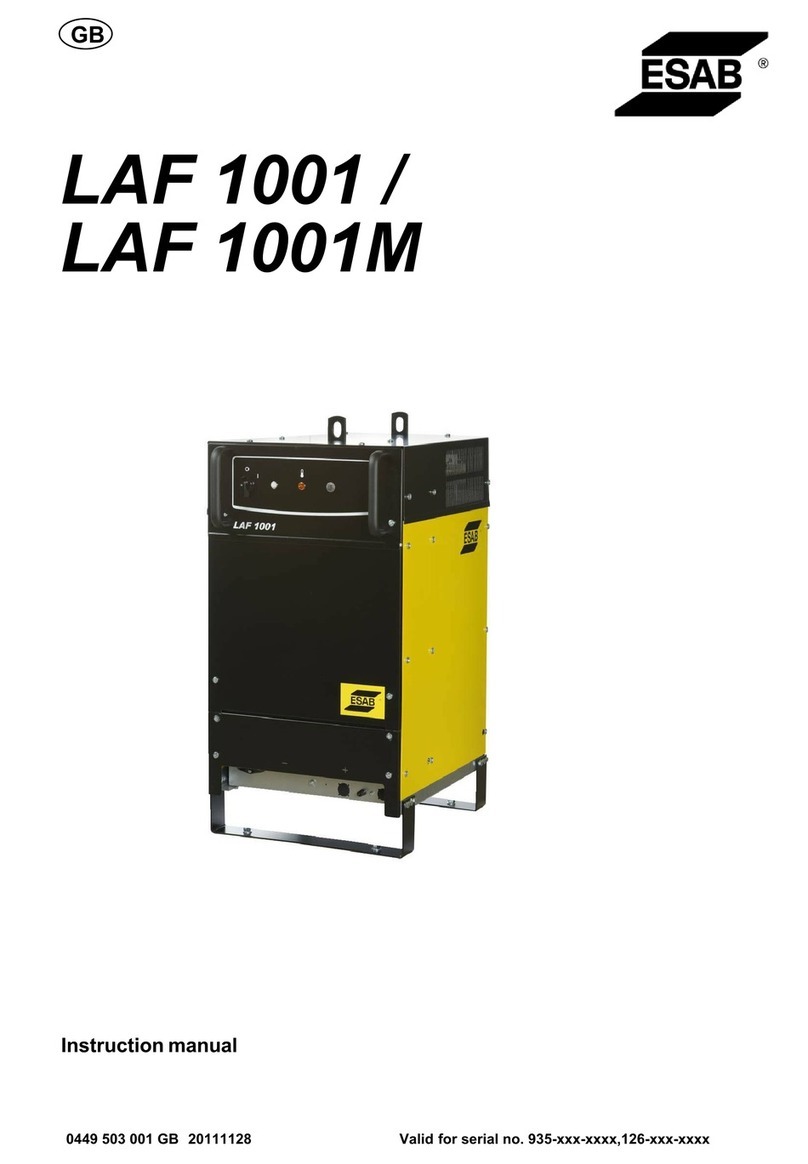
ESAB
ESAB LAF 1001 instruction manual
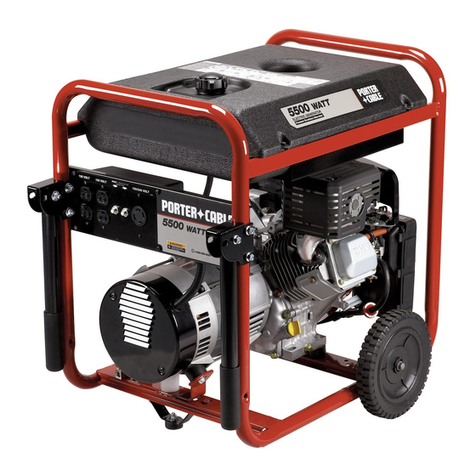
Porter-Cable
Porter-Cable A02871-043-0 instruction manual
